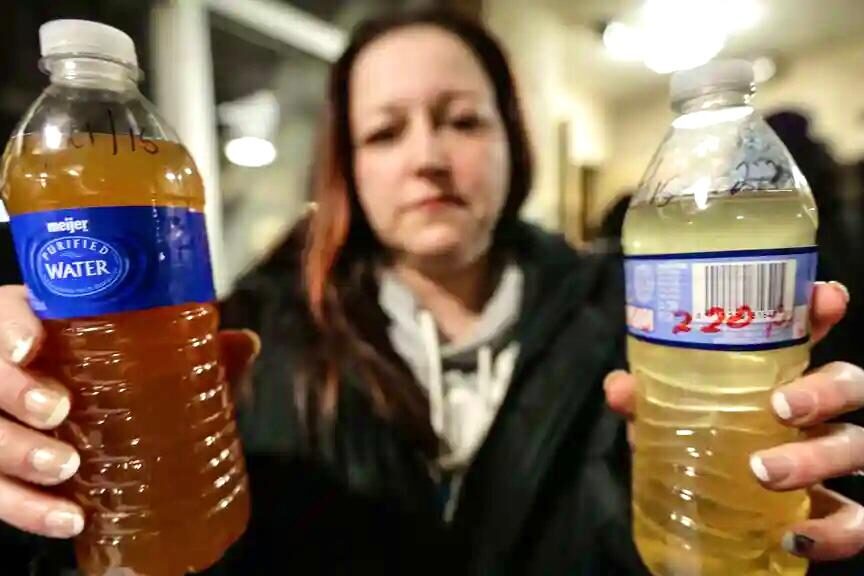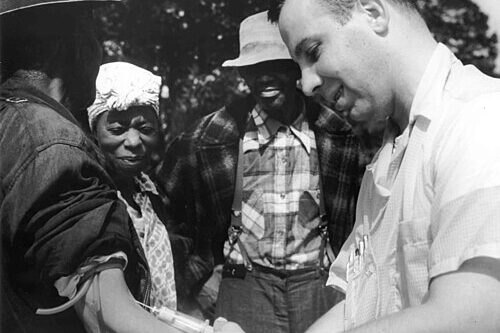1. Flint Water Crisis (2014–present)

In 2014, Flint, Michigan, switched its water source to the Flint River to cut costs resulting in lead-contaminated water that exposed thousands, including children, to toxic levels. This led to a spike in lead poisoning, especially among vulnerable residents, with ongoing health and developmental impacts. Even now, replacement of lead pipes continues, but major criminal charges have yet to be handed down.
The crisis exposed layers of government neglect, delayed action, and institutional failures, disproportionately affecting low-income and minority communities. While some officials faced legal scrutiny, critics say it’s still far from justice. Flint’s struggle continues to be a cautionary tale about infrastructure, environmental racism, and how slow accountability can amplify suffering.
2. MOVE Bombing (1985)

In May 1985, Philadelphia authorities dropped a bomb on the home of MOVE, a Black liberation group. The explosion and ensuing fire killed 11 people, including five children, and destroyed over 60 homes, leaving hundreds homeless. A helicopter pilot had warned officials that their bunker presented no real threat but orders still went ahead. Despite investigations that called the decision “grossly negligent” and “reckless,” no one was ever criminally charged. Decades later, the University of Pennsylvania even discovered human remains of a 12-year-old victim in its museum highlighting the continued mishandling of this atrocity. These details cast a long shadow and people still gather each May to mourn and demand accountability.
3. Tuskegee Syphilis Study (1932–1972)

Between 1932 and 1972, the U.S. Public Health Service orchestrated a horrifying experiment in Tuskegee, Alabama. They studied 399 Black men with syphilis and 201 without, deceiving them into believing they were being treated for “bad blood”. Even after penicillin proved effective in the 1940s, none of the infected men received it despite routine use elsewhere.
This abuse of medical ethics and racial prejudice resulted in direct suffering and death: at least 28 men died of syphilis, 100 more from related complications, 40 wives became infected, and 19 children received congenital syphilis. It wasn’t until 1972, when whistleblower Peter Buxtun leaked the truth, that the study was shut down. Though President Clinton issued a formal apology in 1997 and victims received a $10 million settlement, the harm done to communities and the distrust sown is still felt today. This story changed medical ethics, but too late for those who suffered.
4. Japanese-American Internment (1942–1945)

During the World War II, between 1942 and 1945, over 120,000 Japanese Americans and many U.S. citizens were forcibly uprooted and sent to internment camps under Executive Order 9066, issued by President Franklin D. Roosevelt. Many lost homes, businesses, savings, and dignity. Though the Civil Liberties Act of 1988 offered an apology and $20,000 per survivor, that was a drop in the bucket compared to what was lost.
Compensation didn’t address the intergenerational trauma, cultural loss, and shattered trust. Numerous families never applied or were ineligible leaving many still wounded. Today, descendants and historians push for educational initiatives, restored property rights, and fuller recognition of this civil rights violation calling for justice that goes beyond a letter and a check.
5. Radium Girls Poisoned (1920s)

It was the women’s steady brushstrokes that lit up watch faces but also sealed their fates. In the 1920s, dozens of young female workers at radium dial factories diligently painted luminous numbers, often sharpening their brushes with their lips. They were assured the paint was harmless and even praised its glow. But soon, jawbones deteriorated, teeth rotted, anemia set in, and bone fractures plagued them, a condition known as “radium jaw”.
Companies like the U.S. Radium Corporation denied responsibility, even accusing victims of syphilis to discredit them. It took lawsuits in 1928 for workers to win settlements of $15,000 plus annual support and spark key changes in occupational health standards. Their courage reshaped labor law and banned brushing paint with lips, introduced protective gear, and later helped phase out radium in consumer items. However, many women died swiftly even after settlements.
6. Attica Massacre (1971)

In September 1971, inmates at the Attica Correctional Facility in New York took control of the prison to protest appalling conditions, overcrowding, brutal treatment, and systemic neglect. After four tense days, state troopers and guards stormed in, firing lead pellets and buckshot, even removing their badges to avoid identification.
The result: 43 deaths (33 inmates, 10 hostages), scores wounded, but zero criminal charges for those who gave or executed the shoot-to-kill orders. While survivors eventually won civil damages, the state fiercely resisted releasing who ordered the attack; they redacted trooper identities and withheld the Meyer Report for decades. Families continue to press for full transparency and accountability.
7. Emmett Till’s Lynching (1955)

Two days before his 15th birthday, 14-year-old Emmett Till was brutally lynched in Mississippi after accusations that he whistled at a white woman. His killers faced trial and walked free after just one hour of jury deliberation, shielded by all-white juries. Protected by double jeopardy, the confessed murderers Milam and Bryant even sold their story to Look magazine for $4,000.
Efforts to reopen the case triggered in part by a 2017 book recanting the accuser’s story ended with the DOJ closing investigations in 2021, citing expired opportunities for charges and insufficient evidence to compel action. No justice for Emmett Till means no justice. His murder galvanized the civil rights movement but the legal system never redressed the wrong.
8. Tulsa (Greenwood) Massacre (1921)

Between May 31 and June 1, 1921, a thriving Black community known as Greenwood dubbed “Black Wall Street – one of the wealthiest black communities in the United States at that time” was obliterated by white mobs, some of whom had been appointed as deputies and armed by city government officials, killed an estimated 300 residents, burned churches, hotels, schools, and homes across 35 acres. The results were 36 total; 26 black and 10 white dead (1921 records), 150–200 black and 50 white dead (1921 estimate by W. F. White).
Additionally, more than 800 people were admitted to hospitals, and as many as 6,000 black residents of Tulsa were interned in large facilities, many of them for several days. For decades the atrocity was silenced in textbooks and public memory. Only in recent years did Oklahoma establish a commission (2001), create scholarships, and mandate education on the massacre. Still, the DOJ in 2024 determined no criminal prosecutions are possible due to dead perpetrators and statutes of limitation.
9. Bonus Army Crackdown (1932)

In the summer of 1932, 17,000 World War I veterans dubbed the “Bonus Army” marched on Washington, D.C., demanding early payment of promised bonuses in the face of the Great Depression. They pitched tents near the Capitol and staged peaceful protests. But President Hoover deployed U.S. troops under General MacArthur, who used tanks, tear gas, and bayonets to disperse the crowd, burning their camps and injuring hundreds of veterans and families, even infants and toddlers were hit.
The government eventually granted the bonuses in 1936, but never apologized or held anyone accountable for the harsh crackdown. For veterans who had returned to defend the country, seeing their protest violently suppressed was a painful betrayal of both patriotism and justice. It set a dangerous precedent: even peaceful dissent from citizens could be met with military force, not government compassion.
10. Killing of Fred Hampton (1969)

In the early morning hours of December 4, 1969, Chicago police and the FBI raided Black Panther leader Fred Hampton’s apartment, while he slept next to his pregnant fiancée. They fired over 100 rounds, killing Hampton and fellow Panther Mark Clark, and wounding others all while the Panthers fired just once. Newly released documents show the FBI orchestrated an “assassination” of Hampton, whom they considered a rising radical voice.
A civil lawsuit for wrongful death was later filed on behalf of the survivors and the relatives of Hampton and Clark. It was resolved in 1982 by a settlement of $1.85 million, yet no criminal charges were ever brought. The agents involved went unpunished. Hampton’s death remains a symbol of state-sponsored repression and unchecked surveillance.
11. Love Canal Toxic Dump (1970s)

In the late 1970s, residents of Love Canal, New York, discovered their neighborhood was built atop a chemical waste dump. Corroding drums surfaced in backyards, playgrounds, and even basements leaking toxins linked to miscarriages, birth defects, leukemia, and respiratory illness. After relentless protests of mothers with strollers at the forefront the federal government declared a health emergency in 1978 and initiated the Superfund law in 1980. Hooker Chemical (later Occidental) paid settlements and supervised cleanup. Yet the community still struggles with health and trust issues. Though policy changed, true accountability remains elusive, and people continue to ask: is that enough?
12. Boarding School Abuse (1819–1969)

From the early 1800s through 1969, the U.S. forcibly removed thousands of Native American children from their families and placed them in boarding schools run by government agencies and churches to strip them of their languages, cultures, and identities. At least 973 children died in these institutions, with more graves still being uncovered across the country.
A 2024 Interior Department report exposes this horror and outlines calls for a federal apology, memorial efforts, and cultural restoration. President Biden announced a formal apology in October 2024, but families still seek reparations, land restoration, and lasting healing initiatives. The journey toward justice is just beginning.
13. Beirut Barracks Bombing (1983)

On October 23, 1983, a suicide truck bomb detonated at the U.S. Marine barracks in Beirut, Lebanon, killing 241 U.S. servicemen and 58 French troops the deadliest single-day loss since World War II. Investigations suggest lapses in security planning and ignored intelligence warnings, but families argue the military command never fully acknowledged systemic failures.
In recent years, victims received compensation through the U.S. Victims of State‑Sponsored Terrorism Fund, but survivors still stress that answers and accountability are incomplete, especially around command decisions and preparedness. They contend that honoring the dead requires not just memorials, but thorough truth-seeking and action to prevent future tragedies.
This story 13 U.S. News Stories That Still Deserve Justice, Even Decades Later was first published on Daily FETCH


